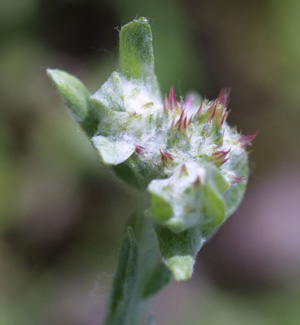UK: Glorious diversity found in ancient farming landscape
02.12.10
In the far east of England on the border between the counties of Norfolk and Suffolk lies a piece of land called Breckland. It's been known for a long time that Breckland has some rather special natural history but a recent study has shown just how important it really is.
 The study, led by the University of East Anglia (UEA), enlisted help from Natural England, the Forestry Commission, Norfolk and Suffolk Biodiversity Partnerships, the Brecks Partnership, and the wild plant conservation charity Plantlife to survey every single plant and animal in the study area (1,000 km2). In what is believed to be the first study of its type ever carried out in the UK over 200 naturalists collected nearly a million records and found nearly 12,500 species - of which more than 2,000 are of national conservation concern.
The study, led by the University of East Anglia (UEA), enlisted help from Natural England, the Forestry Commission, Norfolk and Suffolk Biodiversity Partnerships, the Brecks Partnership, and the wild plant conservation charity Plantlife to survey every single plant and animal in the study area (1,000 km2). In what is believed to be the first study of its type ever carried out in the UK over 200 naturalists collected nearly a million records and found nearly 12,500 species - of which more than 2,000 are of national conservation concern.
Red-tipped cudweed, one of the rare plants of Breckland © Plantlife
"These exciting findings demonstrate beyond doubt what conservationists have long suspected - that Breckland is a unique region and vitally important hotspot for rare and threatened species, making it a key area for conservation within the UK," said Dr Paul Dolman of UEA's School of Environmental Sciences who led the study.
According to UEA Breckland is one of the driest places in England and holds the largest areas of lowland forest in the UK as well as having large areas of open heathland, and grassland. Sandy soils made ploughing easy so Breckland - from the medieval word "breck" meaning fallow cropped field - was one of the first places in the UK to be settled and cultivated. This ancient relationship between man and nature continues to this day, but many of the specialised species are now very rare, placing even greater importance on this landmark study. "We need to put the 'brecks' back into Breckland," said Dr Dolman.
Remarkably 28 per cent of all the priority UK Biodiversity Action Plan (BAP) species occur in Breckland and over 60 species are rarely found anywhere else in the UK, including the plants Spanish catchfly, Red-tipped cudweed, Field wormwood, and Breckland thyme.
One of the project partners, Plantlife, is working - naturally - on protecting the rich botanical heritage of Breckland. Tim Pankhurst, Plantlife's Regional Conservation Manager said: "Breckland is one of the most important botanical hotspots in England, yet many of its distinctive plant species have declined and are now extreme rarities. Without action, the future for Breckland's most threatened and unique plants is bleak."
The work, which will focus on the recovery of nine priority species, will also trial experimental management techniques, and deliver training to a new network of local volunteers to monitor the conservation efforts.
Plantlife's work is thanks to support from Grantscape and Anglian Water.
Related links:
UK: Wildflowers of Brockles Field avoid the plough
29.07.10
Nature conservation charity Plantlife has saved a wildflower-rich meadow in Kent, UK from possible destruction thanks to a major grant. The meadow will become a key component in Plantlife’s vision for their famous Ranscombe Farm Reserve.
UK IN PICTURES: Conserving plants on the UK's most southerly tip
30.06.10
The coastal grasslands of the Lizard, Cornwall are some of the most diverse plant habitats in the country. Here, unusual geology combines with a mild climate and a remote and ancient agricultural landscape to foster many species that are found nowhere else.
19.04.10
 As spring begins to take a firm hold on the British countryside the timing is perfect for the launch of Plantlife's Wildflowers Count - the successor to Common Plants Survey.
As spring begins to take a firm hold on the British countryside the timing is perfect for the launch of Plantlife's Wildflowers Count - the successor to Common Plants Survey.